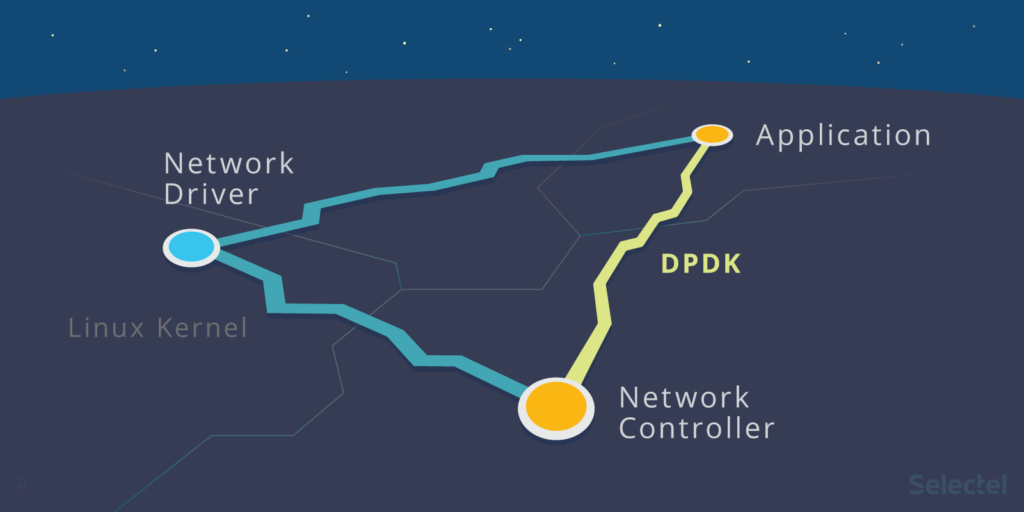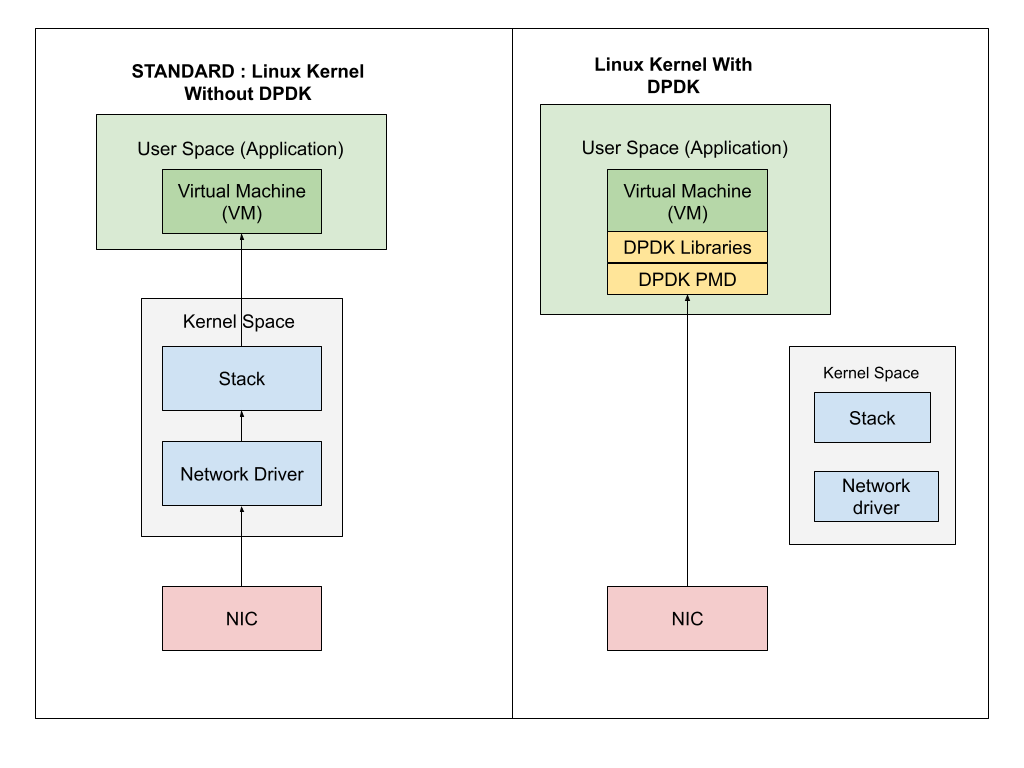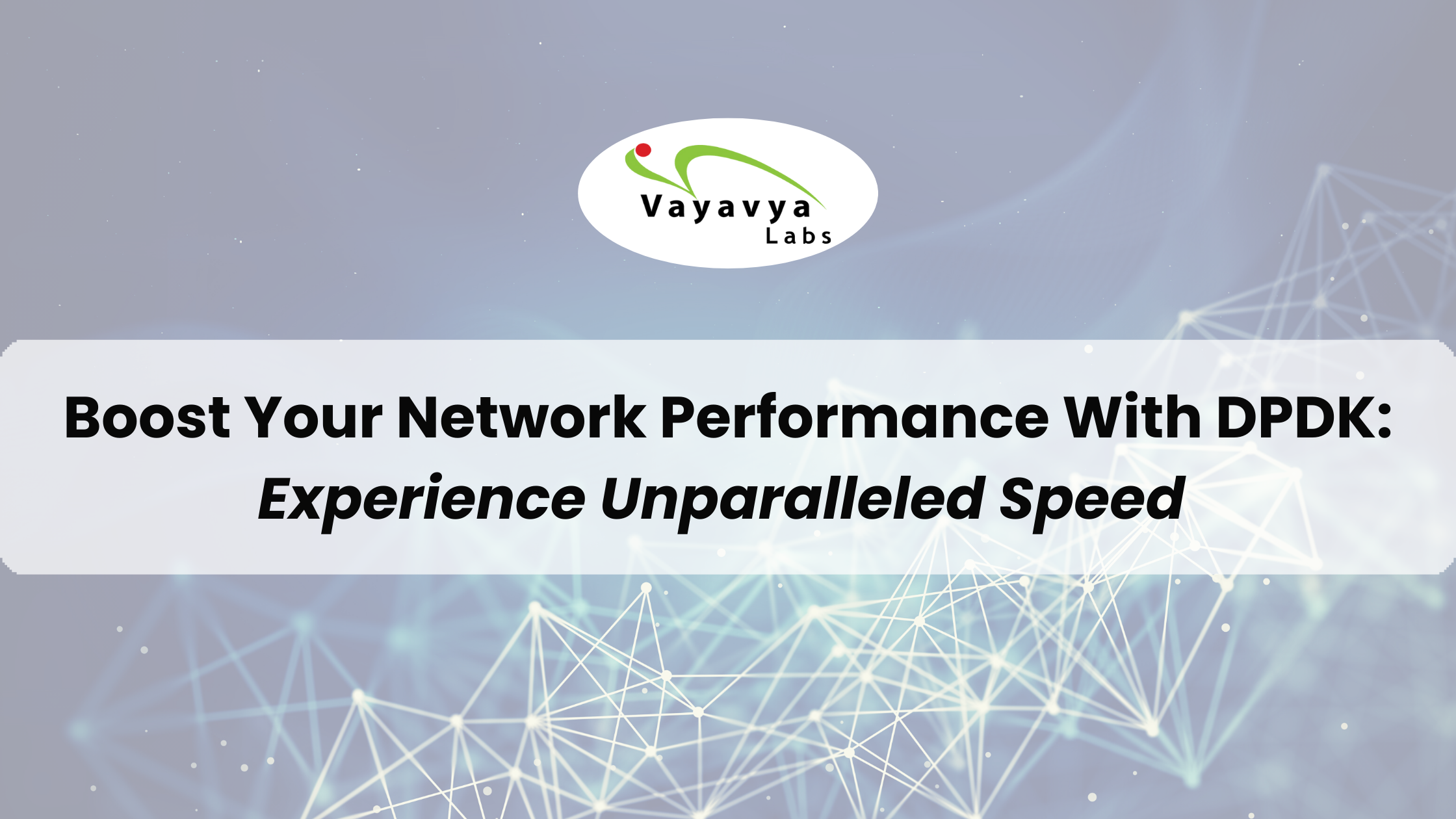In today’s interconnected world, high-performance networking is important for delivering efficient and responsive applications. The Data Plane Development Kit (DPDK) has emerged as a powerful framework that enables developers to optimize packet processing in software. DPDK has gained significant popularity in recent years due to its ability to boost network performance and reduce latency. In this blog post, we will delve into the world of DPDK, exploring its key features, benefits, and use cases.

What is DPDK?
DPDK stands for Data Plane Development Kit. It is an open-source software framework that provides a set of libraries and drivers for fast packet processing in user space.
It provides a user-space network stack, bypassing the traditional kernel networking stack, to achieve higher performance and lower latency. DPDK aims to maximize the processing power of modern CPUs by enabling direct access to the underlying hardware capabilities.
How does DPDK work?
DPDK makes communication possible between NIC and the application in user space without any kernel involvement. It provides a set of data plane libraries and polling-mode drivers (PMD) that makes the networking applications run much faster.
To understand this in a better way, let’s look at the following diagram :

On the left we see the traditional way of packet processing, and on the right with DPDK. We see that the kernel doesn’t step in at all while making use of DPDK! The communication is directly between the NIC and the user space with the help of some special libraries and drivers.
Before diving into more details on DPDK, let’s first try to get a basic understanding of how a standard networking software stack on Linux works.
The sockets API, exposed by libc, is a necessity for any user application aiming to establish a TCP connection or send a UDP packet. For TCP connections, a series of system calls are internally utilized:
- socket(): This call allocates a socket and assigns it a file descriptor.
- bind(): It associates the socket with an IP address and/or protocol port pair. The application can specify both, or allow the kernel to choose the port.
- listen(): This call prepares a connection queue (only applicable for TCP).
- accept(): It accepts an established connection from the queue.
- recvfrom(): If there are any bytes waiting on the socket, this call receives them. In case the read buffer is empty, it may block.
- sendmsg(): This call allows the application to send a buffer over the socket.
Call to each of these kernel side functions invokes a context switch, which eats up precious compute resources.
Hence DPDK offers significantly improved networking performance compared to the standard kernel. It achieves this by bypassing kernel operations, reducing context switches, and providing direct access to network hardware.
How is DPDK processing the packets?
Before understanding how the packets are processed with DPDK, let’s look into DPDK’s five core components:
- Environment Abstraction Layer (EAL): It takes charge of facilitating access to fundamental resources, such as memory space and hardware, operating at a low level.
- MBUF: The MBUF is a data structure utilized to encapsulate network packets as messages.
- MEMPOOL: MEMPOOL refers to the library designed to facilitate the creation and management of allocated memory packets.
- RING: The RING library is responsible for efficiently handling log-less messages exchanged between threads, cores, and other entities.
- TIMER: TIMER is a component utilized for managing asynchronous callback functions in a time-controlled manner.
DPDK operates by bypassing the kernel’s networking stack and directly accessing network interfaces, enabling high-performance packet processing without kernel involvement. Here’s an overview of how DPDK accomplishes this:
- Poll-Mode Drivers (PMDs): DPDK provides specialized drivers called Poll-Mode Drivers (PMDs) for supported network interface cards (NICs). These PMDs are designed to work in user space and directly interact with the NIC hardware, bypassing the kernel and allowing applications to achieve optimal packet processing performance.
2. Memory Management: DPDK allocates a dedicated memory pool for packet buffers in user space. This memory pool is pre-allocated during initialization and shared across the application.
3. Ring Buffers: DPDK utilizes ring buffers, which are data structures residing in shared memory, to manage packet transmission and reception. These ring buffers are used to exchange packets between the network interface and the application.
4. Packet Reception: When a packet arrives at the NIC, the PMD places the packet directly into the appropriate receive ring buffer. This bypasses the kernel’s network stack and reduces overhead, as the packet is immediately available to the application for processing.
5. Packet Transmission: When the application needs to send a packet, it places the packet into a transmit ring buffer associated with the desired NIC and instructs the PMD to transmit it. The PMD then sends the packet directly from the transmit ring buffer to the NIC for transmission.
6. Polling: In DPDK, the application actively polls the ring buffers to check for incoming packets or available transmit slots. This polling approach allows the application to efficiently handle packets in a tight loop without relying on interrupts or kernel notifications.
By utilizing these techniques, DPDK achieves direct access to the NIC hardware and eliminates the need for the kernel to handle packet processing, interrupt handling, and context switches. This results in reduced latency, improved throughput, and efficient packet processing in user space.
It’s important to note that while DPDK operates independently of the kernel for packet processing, the kernel is still responsible for other system functions such as memory management, process scheduling, and device initialization. DPDK focuses specifically on optimizing data plane packet processing tasks.
Why use DPDK?
- DPDK proves highly beneficial when aiming to enhance packet processing speed on multi-core CPUs.
- DPDK allows developers to build high-speed data packet network processing applications that operate in user space, bypassing the operating system kernel. This bypass minimizes the overhead introduced by context switching and system calls, resulting in significantly improved performance and reduced latency.
- DPDK provides a set of efficient and optimized poll mode drivers for a wide range of network interface cards. These drivers enable applications to directly interact with the NIC hardware, allowing for more control over packet processing and eliminating the need for interrupts.
- Low Latency and High Throughput: DPDK’s user-space approach and poll mode drivers enable applications to achieve extremely low packet processing latencies and high throughput rates. This is particularly beneficial for latency-sensitive applications such as financial trading, telecommunications, and high-frequency trading.
Use Cases
- Network Function Virtualization (NFV): DPDK has become a vital component in NFV deployments. Virtual network functions (VNFs) can efficiently handle network traffic and achieve high-performance packet processing by harnessing the power of DPDK. This is especially relevant in scenarios where virtualized network appliances, such as firewalls, load balancers, and routers, need to achieve wire-speed performance.
- Software Defined Networking (SDN): DPDK is widely used in SDN controllers and switches to accelerate packet processing and improve the overall performance of network virtualization. By offloading packet handling to DPDK-powered software switches, network operators can achieve increased throughput and reduced latency.
- Cloud Computing and Virtualization: DPDK is beneficial in cloud computing environments where virtual machines (VMs) require efficient networking performance. By integrating DPDK with hypervisors, VMs can achieve improved network I/O performance, enabling faster data transfers and improved overall cloud application performance.
- Network Monitoring and Analysis: DPDK is utilized in network monitoring and analysis tools to capture and analyze network packets in real time. By bypassing the kernel and directly accessing network interfaces, DPDK enables high-speed packet capture and processing, allowing for efficient network monitoring, performance analysis, and troubleshooting.
Conclusion
The Data Plane Development Kit (DPDK) has revolutionized the world of high-performance networking by providing a framework for accelerating packet processing in software.
Overall, DPDK’s ability to bypass the kernel, provide user-space networking capabilities, and optimize packet processing has resulted in significant performance gains in various domains. It has enabled faster data transfers, reduced latency, and improved overall network application performance, making it a valuable tool for accelerating packet processing in performance-critical scenarios.
Head over to our contact section and talk to our experts to learn more about what we are doing in the space and how can we benefit your business.

